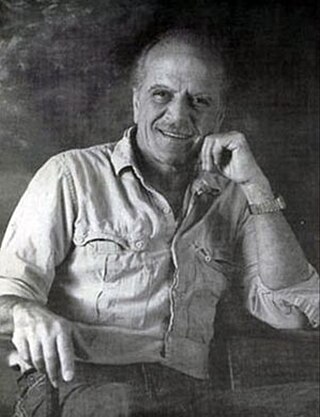Related Research Articles

The National Museum of Archaeology, Anthropology, and History of Peru is the largest and oldest museum in Peru, housed at the Palacio de la Magdalena, located in the main square of Pueblo Libre, a district of Lima, Peru. The museum houses more than 100,000 artifacts spanning the entire history of human occupation in what is now Peru. Highlights include the Raimondi Stele and the Tello Obelisk from Chavín de Huantar, and an impressive scale model of the Incan citadel, Machu Picchu. As of 2023, the museum is under restoration and very few rooms are open for visitors.

The National Museum of Anthropology is a national museum of Mexico. It is the largest and most visited museum in Mexico. Located in the area between Paseo de la Reforma and Mahatma Gandhi Street within Chapultepec Park in Mexico City, the museum contains significant archaeological and anthropological artifacts from Mexico's pre-Columbian heritage, such as the Stone of the Sun and the Aztec Xochipilli statue.

The National Historical Museum is a museum located in Buenos Aires, Argentina, and is a museum dedicated to the history of Argentina, exhibiting objects relating to the May Revolution and the Argentine War of Independence.

Rodolfo Abularach was a Guatemalan painter and printmaker of Palestinian descent.

The National Archaeological Museum is a archaeology museum in Madrid, Spain. It is located on Calle de Serrano beside the Plaza de Colón, sharing its building with the National Library of Spain. It is one of the National Museums of Spain and it is attached to the Ministry of Culture.

Machaquila is a major ruined city of the Maya civilization in what is now the El Peten department of Guatemala.

The National Museum of Natural Sciences is a natural history museum in Madrid, Spain. Dependent on the Ministry of Science, it is one of the National Museums of Spain, and it is managed by the Spanish National Research Council (CSIC).
National Museum of Archaeology or National Archaeology Museum may refer to:
The Museo Nacional de Arte Moderno "Carlos Mérida" is a national museum of modern art in Guatemala City, named after Carlos Mérida.

The Museo Nacional de Arqueología y Etnología is a national museum of Guatemala, dedicated to the conservation of archaeological and ethnological artifacts and research into Guatemala's history and cultural heritage. The museum is located in Guatemala City, at Finca La Aurora.
The Guatemalan National Natural History Museum is a national natural history museum in Guatemala City, Guatemala.

Luis Rolando Ixquiac Xicará is an Indigenous artist born in Quetzaltenango, Guatemala. He studied at the Escuela Nacional de Artes Plásticas "Rafael Rodríguez Padilla" in Guatemala, and continued his studies in Paris, France.
Bejucal is a Maya archaeological site in the Petén Department of Guatemala. It is located 7 kilometres (4.3 mi) northeast of El Zotz and was subservient to that city. The site is thought to date to the second half of the 4th century AD, in the Early Classic period.

The Palacio de la Autonomía is a museum and site where the Universidad Nacional Autónoma de México gained autonomy from direct government control in 1929. The building is from the late 19th century, and located on the corner of Licenciado de Verdad and Rep de Guatemala streets, north of Santa Teresa la Antigua and east of Templo Mayor. The site has a 500-year history, starting from part of lands granted by Hernán Cortés. The current building was constructed by the administration of President Porfirio Díaz, but it was ceded to the university in 1910. Since that time, the building has had a number of uses, including housing a dental school and a preparatory school. Today it houses the Museo de la Autonomía Universitaria.

The Museo Regional del Sureste de Petén is an archaeological museum in the town of Dolores in the Petén Department of Guatemala. The museum is located 82 kilometres (51 mi) from Flores, the departmental capital, among the Maya Mountains in an area rich in archaeological sites. It is open daily from 8am to 5pm.
Juan Pedro Laporte Molina was a prominent Guatemalan archaeologist best known for his work on the ancient Maya civilization. He studied in the United States at the University of Arizona, in which he enrolled at the age of nineteen. After just one year he transferred to the Escuela Nacional de Antropología e Historia in Mexico. He continued his studies at the Universidad Autónoma de México from 1972 to 1976, from which he graduated with a doctorate in archaeology. He worked as a research assistant at the Museo Nacional de Antropología in Mexico City from 1967 through to 1976. Laporte worked at various archaeological sites while he was in Mexico, including Tlatilco, Chichen Itza and Dainzú. He first began working as an archaeologist in Guatemala in the 1970s, and was the head of the School of History of the Universidad de San Carlos de Guatemala (USAC) for more than thirty years. He first entered USAC in 1977, soon after returning from Mexico. In 1974 he carried out investigations at the Maya archaeological site of Uaxactun in the northern Petén Department of Guatemala. Between 1974 and 1976 he carried out archaeological investigations in Antigua Guatemala, which has since been designated as a UNESCO World Heritage Site, and around Lake Izabal.
The Museo Nacional de Historia Natural Cubana or Museo Nacional de Historia Natural de Cuba in Havana, Cuba is the national museum of Natural History, with exhibits of Cuba's plants and animals. It is located in a former U.S. embassy building.
References
- ↑ "Museo Nacional de Historia". Portal MCD (in Spanish). Retrieved 2022-03-06.